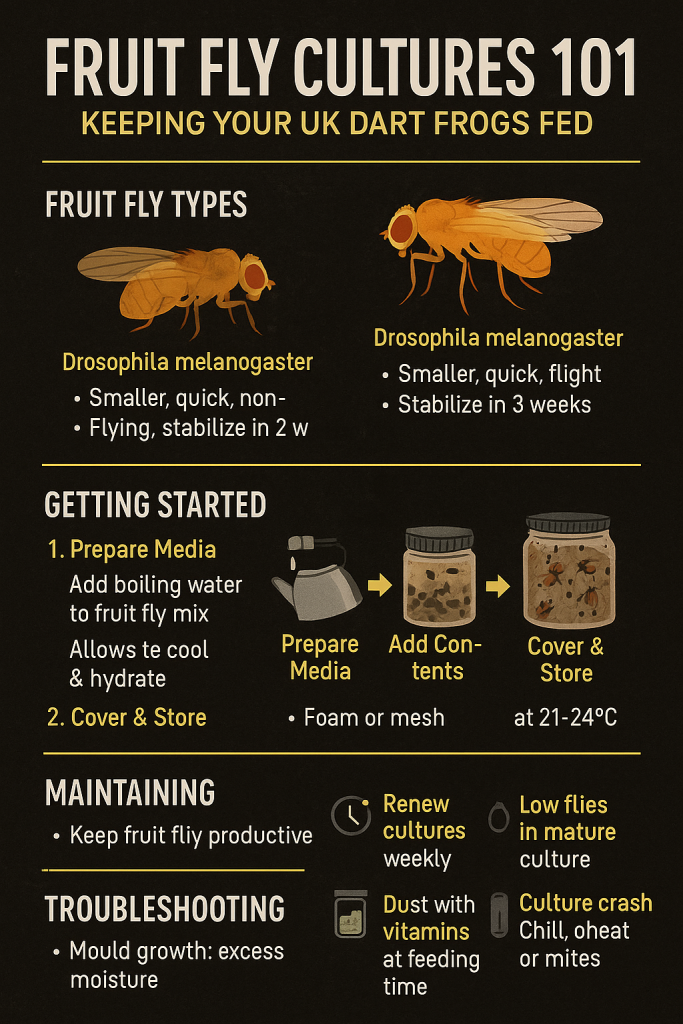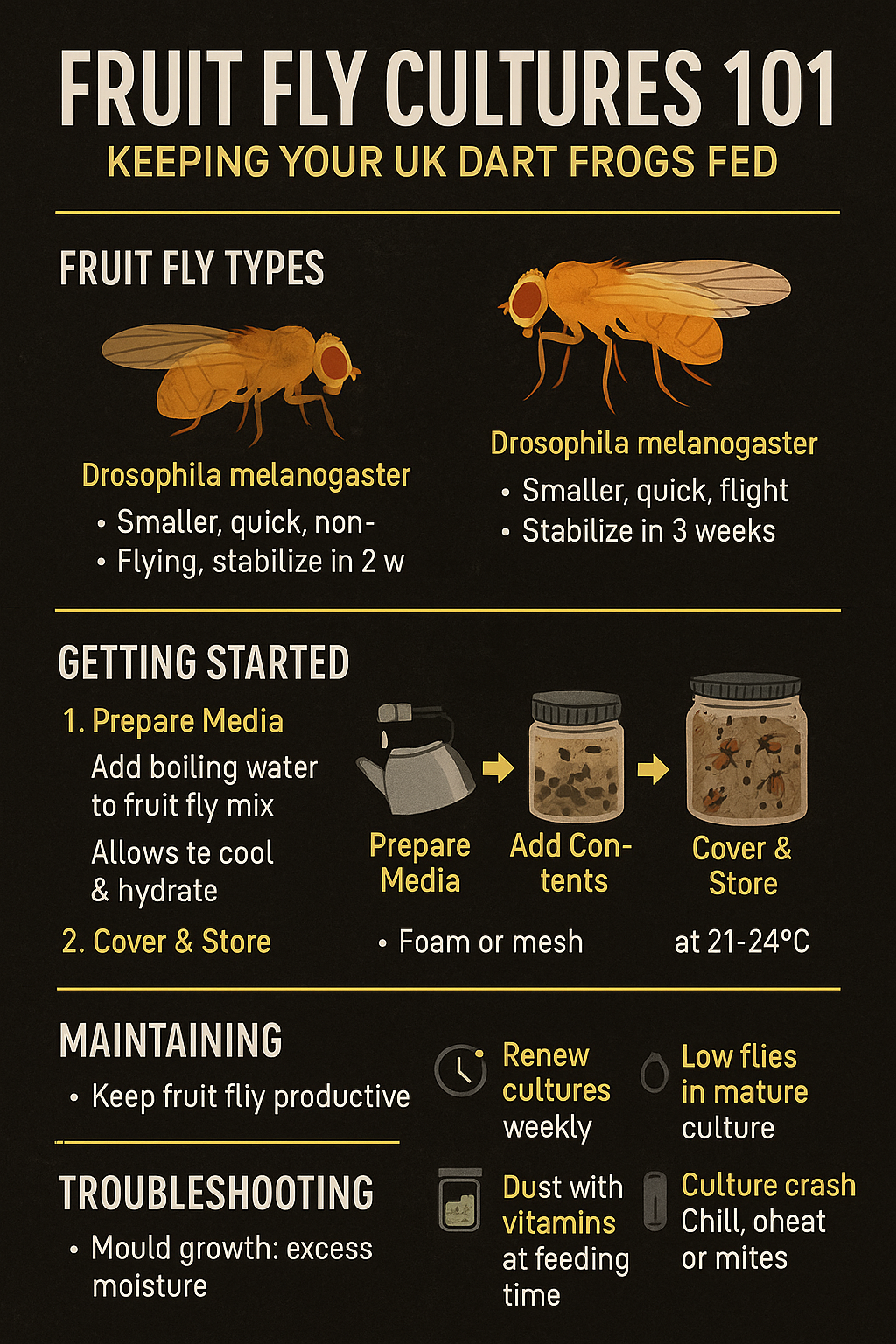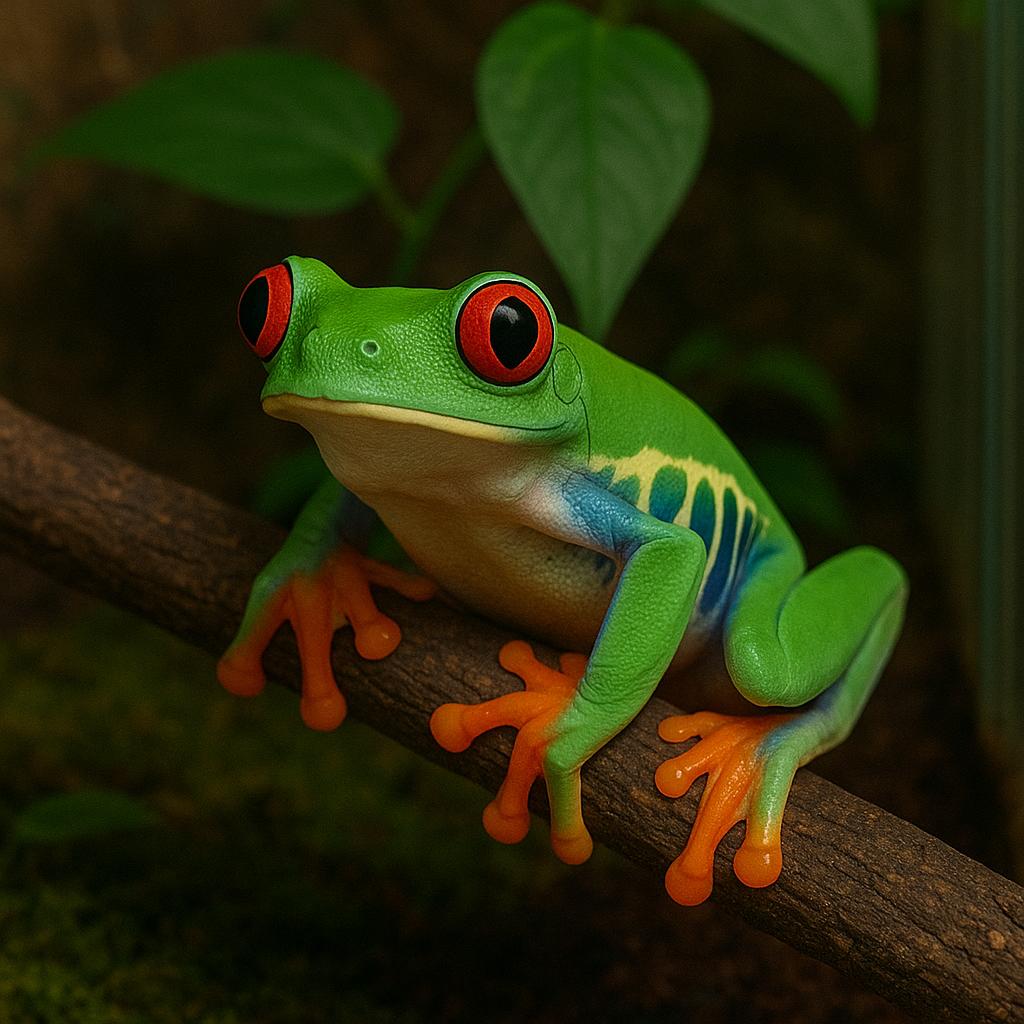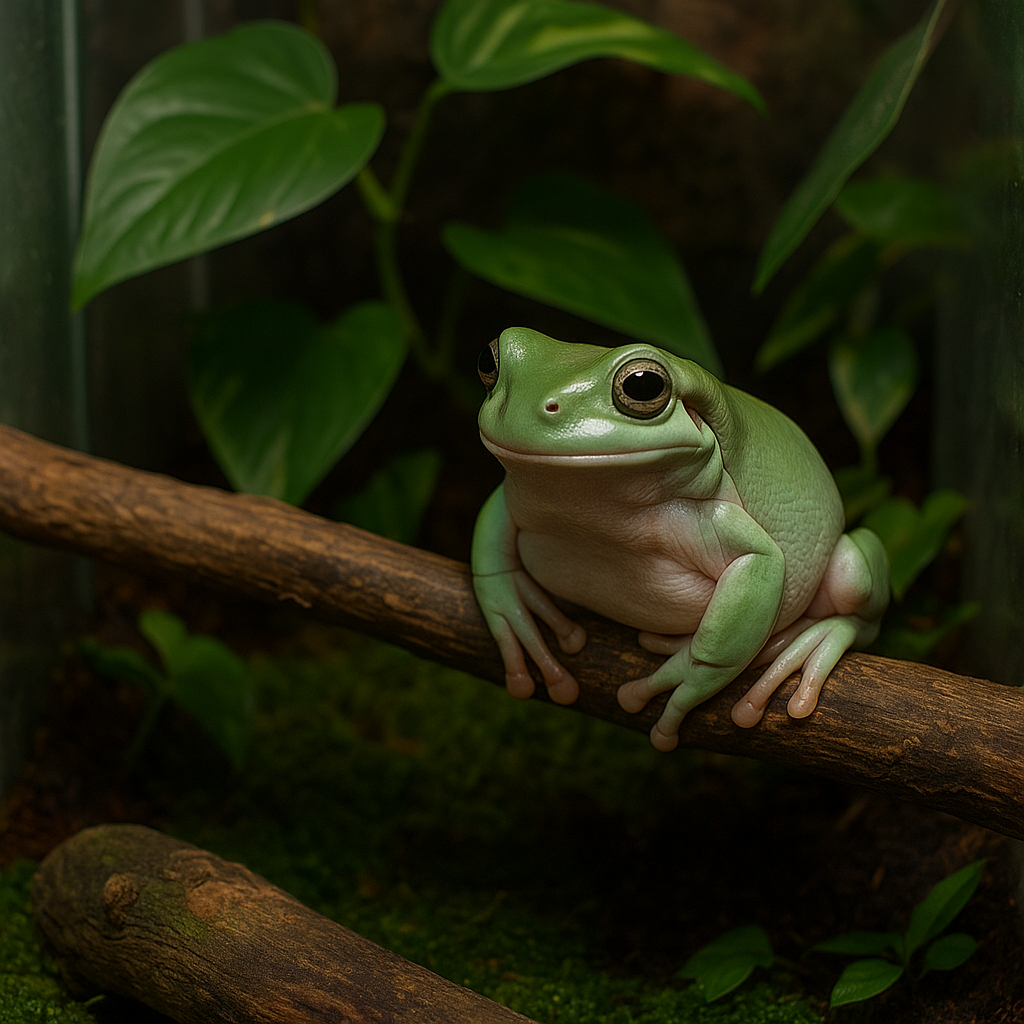Let’s be honest: if you’re keeping dart frogs in the UK, you’re basically running a tiny fly farm. Whether you love it or loathe it, mastering fruit fly cultures is key to keeping your frogs healthy, active, and well-fed.
This guide will show you how to start, maintain, and troubleshoot Drosophila melanogaster and Drosophila hydei cultures – the two staples of UK dart frog diets. You’ll get tips for culture media, avoiding mould, rescuing crashes, and making sure your flies stay productive year-round.
Why Culturing Flies Matters
Fresh flies are better than shop-bought tubs that are half-dead by the time they arrive. Culturing at home gives you control over freshness, quantity, and nutrition. And if you’ve got morphing froglets? You’ll need flies every day.
The Two Main Species
- Drosophila melanogaster: Tiny, flightless, fast breeders. Best for froglets and small species like Ranitomeya.
- Drosophila hydei: Larger, slower-growing, but meatier. Great for adult tinctorius, terribilis, leucomelas.
What You’ll Need to Start
- Starter culture (melano or hydei)
- Culture media (pre-mix or DIY blend)
- Vinegar or cider (optional for anti-mould)
- Breathable culture pots (deli cups or vented tubs)
- Coffee filters or poly lids for airflow
- Paper towels, excelsior or shredded paper for climbing surface
How to Build a Culture
- Add 2–3 cm of media to the pot
- Optional: Add a splash of cider vinegar or sprinkle in mould inhibitor
- Insert a folded paper towel or rolled-up excelsior for climbing
- Tap in flies from an active culture (30–50 adults is plenty)
- Seal with a breathable lid
Incubation Conditions
- Temperature: 21–24°C is ideal. UK rooms in winter may need heating mats or warm cupboards.
- Light: Indirect is fine. No need for UV or LEDs.
- Humidity: Too damp = mould. Too dry = crusty media. Aim for stable middle ground.
Most cultures start producing in 10–14 days. Melanos are quicker; hydei can take 2–3 weeks.
Maintaining Your Cultures
- Start a new culture every 5–7 days
- Label with date so you can track production cycles
- Don’t overcrowd – split cultures before they get too sweaty
- Use calcium powder when feeding to frogs
Troubleshooting UK Problems
- Mould: Usually due to cold or poor ventilation. Try less water or add more dry mix.
- Crashes in winter: Use a heat mat on a thermostat under a cupboard shelf.
- Flies stuck in goo: Media too wet or old. Start a fresh batch with a drier mix.
- Bad smell: Dead culture. Bin it and start over.
Feeding Tips for Dart Frogs
- Use a deli cup to tap flies into feeding tubs
- Dust with Repashy Calcium Plus or a mix of calcium and multivitamin
- Offer flies daily for froglets, every other day for adults
Frogs usually eat until full – but don’t overfeed. Uneaten flies can drown or mould up the tank.
Infographic: Fruit Fly Culture Tips for UK Keepers

What About Buying Cultures?
Starter tubs from reputable sellers (like ours) are great for new keepers, but long-term you’ll want 3–5 rolling cultures at home. It’s cheaper, fresher, and more reliable.
DIY vs Pre-Made Media
- DIY mix: Mashed banana, oats, sugar, yeast, a dash of vinegar.
- Pre-mix: Consistent, clean, easy. Try our blend.
DIY is fun but variable. Pre-mix wins for consistency, especially in cold UK sheds or kitchen cupboards.
Fruit Flies = Frog Fuel
If you’ve got dart frogs, you’ve got flies. With a little setup and a bit of rhythm, you’ll have a constant food supply and zero panic on feeding day. Whether you’re raising terribilis or tiny ranitomeya, it all starts with buzzing tubs on the shelf.
They’re annoying. They’re vital. And when your frogs are hunting like tiny jungle tigers, you’ll be glad you got it right.



